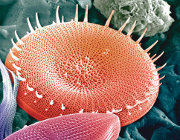Home :: List of Publicly Available Datasets :: Favella ehrenbergii Fehren 1
Favella ehrenbergii Fehren 1
Downloads:
| Principle Investigator(s) | Denis Lynn |
|---|---|
| External sample ID | SPMC 150 |
| NCGR Sample ID | MMETSP0123 |
| Sample accession number | CAM_SMPL_002400 |
| Assembly accession number | CAM_ASM_000218 |
| Combined Assembly Name | N/A |
| Genus | Favella |
| Species | ehrenbergii |
| Strain | Fehren 1 |
| Clonal | Yes |
| Axenic | No |
| Prelim. NCBI Taxon ID | 182087 |
| 18S rRNA | |
| Importance of organism and transcriptomes | ############################################################################################################################################################################################################################################################### |
| Additional citations and references | Dolan, J.R. 2010. Morphology and ecology of tintinnid ciliates of the marine plankton: Correlates of lorica dimensions. Acta Protozool., 49:235-244. |
| Environmental Data | |
| Primary citation for organism's characterization, if available | Kim,S.Y., Yang,E.J., Gong,J., Choi,J.K. 2010. Redescription of Favella ehrenbergii (Claparede and Lachmann, 1858)Jorgensen, 1924 (Ciliophora: Choreotrichia), with phylogenetic analyses based on small subunit rRNA gene sequences. J. Eukaryot. Microbiol. 57:460-467 |
| Latitude | 48.634 |
| Longitude | -122.868 |
| Depth (m) | 1 |
| Collection date | 26-JUL-11 |
| Sample collection site | northern Puget Sound |
| Sample material (e.g. "seawater," "sediment," etc.) | seawater |
| ENVO term for habitat - primary term | Acquatic: marine |
| ENVO term for habitat - secondary term | Not Applicable |
| Habitat | marine habitat |
| Country | UNITED STATES |
| Experimental Data | |
| Date of experiment | 13-OCT-11 |
| Growth medium | Ciliate Media (filtered seawater ammended with dilute f/2 trace metals stock.) |
| Modifications to growth medium | f/2 trace metals stock added to filtered seawater at a concentration of 0.5ml per Liter. |
| Temperature (ºC) | 15 |
| Salinty (psu) | 30 |
| pH | 8.1 |
| Light (µmol photons / m2 / sec) | 25 |
| Day portion of day:night cycle in hours | 12 |
| Night portion of day:night cycle in hours | 12 |
| Nitrate (μmol/L) | 25 |
| Ammonium (μmol/L) | 2 |
| Phosphate (μmol/L) | 2.1 |
| Silicate (μmol/L) | 37 |
| Prey organism, if applicable (genus and species) | Heterocapsa triquetra, Mantoniella squamata, Isochrysis galbana |
| Investigation type | Eukaryotes |








